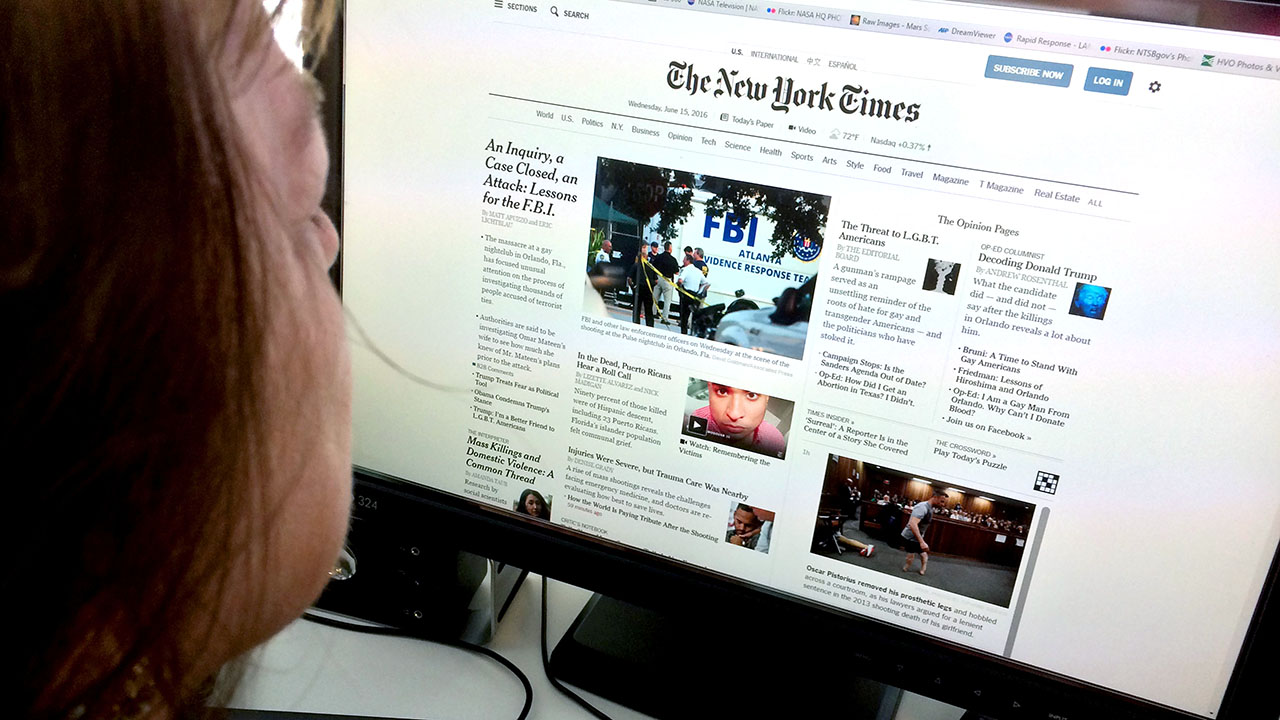Stay Upgraded with Real-Time Coverage by DW News Journalists
Stay Upgraded with Real-Time Coverage by DW News Journalists
Blog Article
How News Online Is Changing the Way We Eat Details
In the electronic age, the usage of information has undergone a seismic change, providing both intricate challenges and extraordinary possibilities. The immediacy of online information platforms allows people to gain access to info instantaneously, customized to match personal passions via advanced formulas. Nonetheless, this ease elevates crucial concerns about the integrity of sources and the capacity for predisposition, as curated web content can unintentionally develop resemble chambers. As we browse this evolving landscape, it becomes necessary to check out exactly how these changes influence our understanding of the globe and the effects for educated decision-making in society.
Instantaneous Access to News

With the advent of electronic technology, the method we take in information has actually undergone a significant makeover, offering immediate access to details at our fingertips. The immediacy of digital information implies that stories can be reported and shared almost instantly, removing the time lag that was inherent in print and tv media.
On-line news outlets have maximized this capacity by creating specialized applications and sites that provide damaging information notifies directly to our tools. This continuous circulation of info ensures that the general public continues to be involved and familiar with present events, promoting a more educated society. In addition, the access of digital news throughout several tools-- mobile phones, tablets, and computer systems-- has made it practical for target markets to access news anytime and anywhere.
Nevertheless, this fast dissemination likewise introduces obstacles, such as the capacity for misinformation to spread swiftly. The stress to release quickly can in some cases jeopardize accuracy, underscoring the requirement for extensive fact-checking and accountable journalism in the digital age.
Customized Web Content Delivery
Tailoring information intake to specific preferences has become a specifying feature of the electronic media landscape. With the arrival of sophisticated algorithms and data analytics, news systems are progressively able to deliver material that lines up very closely with individuals' rate of interests and reading routines. This customization not only enhances individual engagement however likewise makes sure that customers are subjected to one of the most pertinent and prompt information.
The process usually includes collecting information on the user's past interactions, such as short articles read, topics of interest, and time invested in various content kinds. dw news. This information is then assessed to predict the customer's preferences and to curate a customized news feed. As an outcome, customers receive a streamlined flow of info that matches their unique interests, consequently developing a much more rewarding and efficient information intake experience
Furthermore, tailored material shipment has significant effects for media companies. By developing more targeted content, these business can raise reader retention and interaction, resulting in possibly greater advertising and marketing profits. However, this method also raises worries about echo chambers, where customers may only come across perspectives that reinforce their existing ideas. Therefore, striking a balance between customization and diverse content direct exposure remains a crucial difficulty for the industry.
Interactive and Involving Layouts
Welcoming interesting and interactive styles has actually transformed the means audiences take in information online, supplying an extra immersive and participatory experience. Interactive elements such as clickable infographics, video clip explainers, and real-time information integration help with a deeper understanding of complicated subjects, changing passive readers right into energetic individuals in the information narrative.
VR supplies an unmatched degree of engagement, transferring individuals right into a simulated atmosphere where they can experience tales first-hand. These layouts are specifically reliable in covering damaging information and unraveling events, offering a front-row seat to global occurrences.
The Function of Social Media
Social media's prevalent impact has actually redefined the landscape of news consumption, transforming it into an extra equalized and interactive experience. Systems such as Twitter, Facebook, and Instagram have come to be main centers for news dissemination, allowing customers to access info instantaneously and share it commonly. This availability enables people to not just take in news however additionally involve with it, cultivating an area where varied voices can contribute to the discourse.

Social media's algorithm-driven customization customizes the information experience to individual choices, potentially enhancing engagement. Nonetheless, this can additionally develop echo chambers, where individuals are exposed mainly to perspectives that reinforce their present beliefs. Despite this, the function of social media sites in information usage remains crucial, connecting the void in between info providers and target markets, and reshaping just how people connect with information in the important site electronic age.
Challenges of Online Information
While the digital transformation of information distribution uses unmatched ease of access and immediacy, it also offers significant challenges that complicate the landscape of details usage. One primary concern is the proliferation of misinformation and disinformation, which can spread out quickly across electronic platforms. This presents difficulties for consumers in critical credible resources from those that are less reliable, possibly bring about extensive misconceptions.
The rate at which news is supplied on the internet commonly prioritizes timeliness over precision. In the race to be first, some electrical outlets may release unproven info, which can later on show to be incorrect, wearing down public trust in media. Additionally, the resemble chamber effect, facilitated by formulas that customize material to customer preferences, can reinforce existing predispositions and limitation exposure to varied viewpoints.
Monetization methods additionally complicate the landscape. The reliance on advertising profits incentivizes sensationalism and clickbait, overshadowing substantive journalism. Paywalls, while essential for monetary sustainability, can limit accessibility to top quality news, intensifying details inequality.
Final Thought
The improvement of information consumption with on-line systems has substantially transformed info gain access to and involvement. Instantaneous access, tailored web content, and interactive layouts improve the customer experience, while social media sites intensifies reach and immediacy. Despite these improvements, obstacles such as false information and resemble chambers pose considerable problems, potentially wearing down count on reliable sources and limiting direct exposure to varied viewpoints. A well balanced strategy is important to harness the benefits of online sites news while alleviating its fundamental dangers.

As an outcome, individuals obtain a structured circulation of information that matches their distinct interests, thereby developing an extra gratifying and effective news consumption experience.
Systems such as Twitter, Facebook, and Instagram have become main hubs for information circulation, enabling users to accessibility info promptly and share it commonly. In spite of this, the function of social media in information usage remains critical, connecting the void in between information service providers and target markets, and improving how individuals communicate with information in the digital age.
Report this page